

Nikon D810 and 24-70mm f/2.8 (Magnus Johansson)
The 36.3-megapixel D810 is Nikon's top full-frame digital SLR and can produce professional images and videos in almost all conditions. When choosing lenses for the Nikon 810, keep in mind that the camera's high resolution will expose weaknesses and you should avoid low quality glass. Below are our picks for the best lenses for the D810, with the leading options in the categories of all-in-one, wide-angle, portrait, and telephoto. Nikon’s FX lineup continues to grow and there are an increasing number of zoom lens options to compliment the well-established collection of primes.
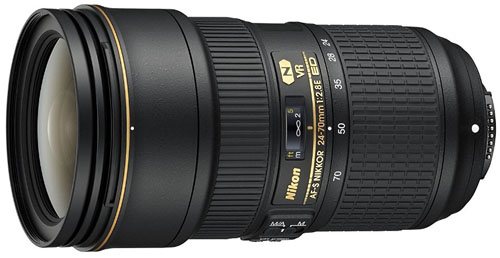 Category: Portrait/travel
Category: Portrait/travel
Weight: 37.8 oz.
What we like: Sharp and good in low light.
What we don't: Heavy and expensive (the non-VR version is 6 ounces lighter).
If we were to pick one lens for the Nikon D810 for everything from landscapes to portraits, it would be the 24-70mm f/2.8 VR. This lens is extremely popular among professionals and enthusiasts for good reason: sharpness and optical quality are exceptional throughout its zoom range, focus is fast and accurate, and the lens has a sturdy build that is made to last. Instead of buying a handful of specialty prime and zoom lenses, you can grab the Nikon 24-70mm f/2.8 with few compromises from an image quality perspective.
Two notable downsides of the Nikon 24-70mm f/2.8 are cost and weight. Despite the versatility, nearly $2,400 is a lot to pay for one lens. And at close to 38 ounces, this is one hefty piece of glass that outweighs all other primes and non-telephoto zooms on the list. Keep in mind that we are recommending the new “E” version here with Vibration Reduction technology—the older non-VR 24-70mm f/2.8 runs about $1,800 and weighs 31.8 ounces. Both are exceptional lenses.
See the Nikon 24-70mm f/2.8E VR
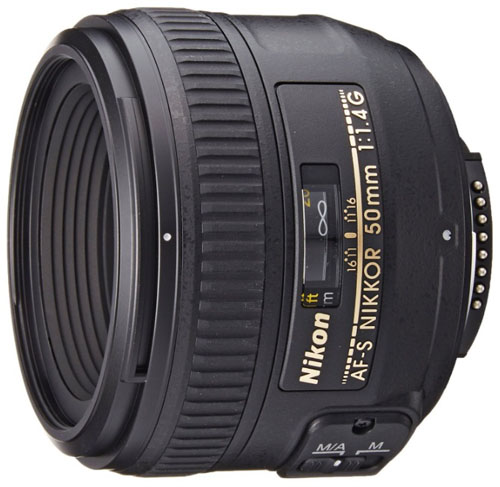 Category: Portrait
Category: Portrait
Weight: 12.7 oz.
What we like: Low light performance.
What we don't: Barrel distortion.
For portrait shooters, the 50mm f/1.4G is one of Nikon’s top FX-format primes. The lens is extremely sharp, performs well in low light, has smooth autofocus, and impressive bokeh. And compared to other fast prime lenses like the 35mm f/1.4, the 50mm is significantly lighter and cheaper. At less than $450, it’s a great way to add a fast, pro-level lens to your Nikon D810 set-up at a reasonable price point.
Our only qualms with the Nikon 50mm f/1.4G aren’t about the lens itself but the competition. On the other side of the aisle, Canon has upped the ante with the 50mm f/1.2, which is pricier and heavier than the f/1.4G but a half-stop faster too (Nikon does have a high quality 50mm f/1.2 manual focus version, but that lens has narrower appeal). And the Nikon 50mm f/1.8 is a perfectly respectable alternative to the f/1.4 at about half the price. Casual photographers and those using DX cameras certainly should consider the slower f/1.8, but we think the D810 merits spending up for the f/1.4.
See the Nikon 50mm f/1.4G
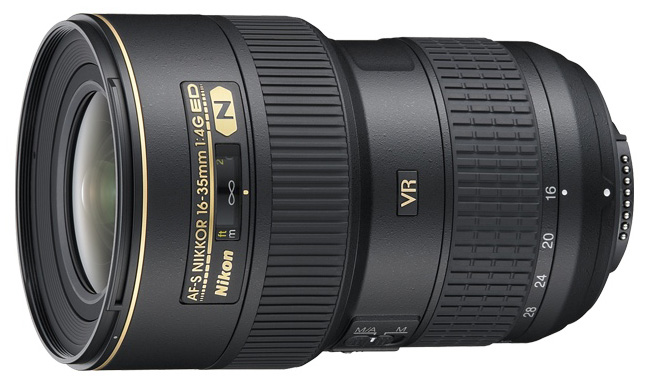 Category: Wide angle
Category: Wide angle
Weight: 24 oz.
What we like: Great value for an FX lens.
What we don't: Low light performance and distortion at the wide end.
Wide-angle photography is a different animal. Bokeh is less of a consideration than with people photos and maximum aperture matters a little less as many landscape photos are taken with good natural light. You certainly can spend up for the Nikon 14-24mm f/2.8 below, also a fantastic lens, but we think this is a good opportunity to save with the f/4 wide-angle zoom.
How do the two lenses stack up? First and foremost, the 16-35mm f/4 is about $800 cheaper depending on current prices. Second, it covers more focal lengths, and aside from not being able to match the ultra-wide capability at 14mm, has a more useful zoom range. Third, it’s more than 8 ounces lighter. The biggest detractor of the 16-35mm is the slower maximum aperture, which is serviceable but not optimal when natural light is low (the lens does have vibration reduction while the 14-24mm does not). Both lenses are super sharp and capable of capturing outstanding wide-angle photos, but we think the Nikon 16-35mm f/4 is a better value for most people.
See the Nikon 16-35mm f/4 VR
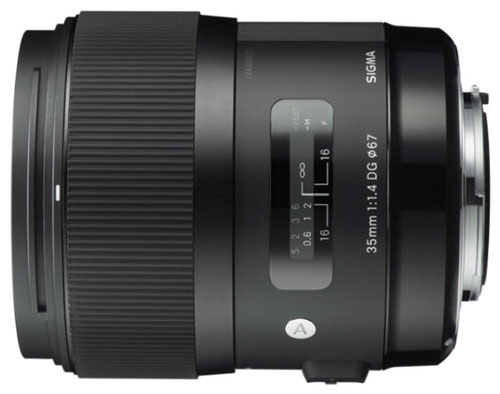 Category: Travel/portrait
Category: Travel/portrait
Weight: 23.5 oz.
What we like: A super fast prime lens on a budget.
What we don't: Heavy and autofocus can be finicky.
As one of our favorite third-party lens builders, Sigma brings to the table unique lenses that sometimes are cheaper than Nikon’s native offerings. In this case, the 35mm f/1.4 “Art” lens is fast, sharp, and a great value at around $900. What do you sacrifice? Autofocus can be slower than Nikon and you don’t get quite the same build quality (although this Sigma lens is pretty well made). You also may have to fine tune the focus upon receiving the lens, which isn’t optimal for some people. We still like the Nikon 35mm f/1.4, but that version is nearly double the price and heavier. We give kudos to Sigma for innovating with the Art series and becoming even more competitive with the top brands.
See the Sigma 35mm f/1.4 Art
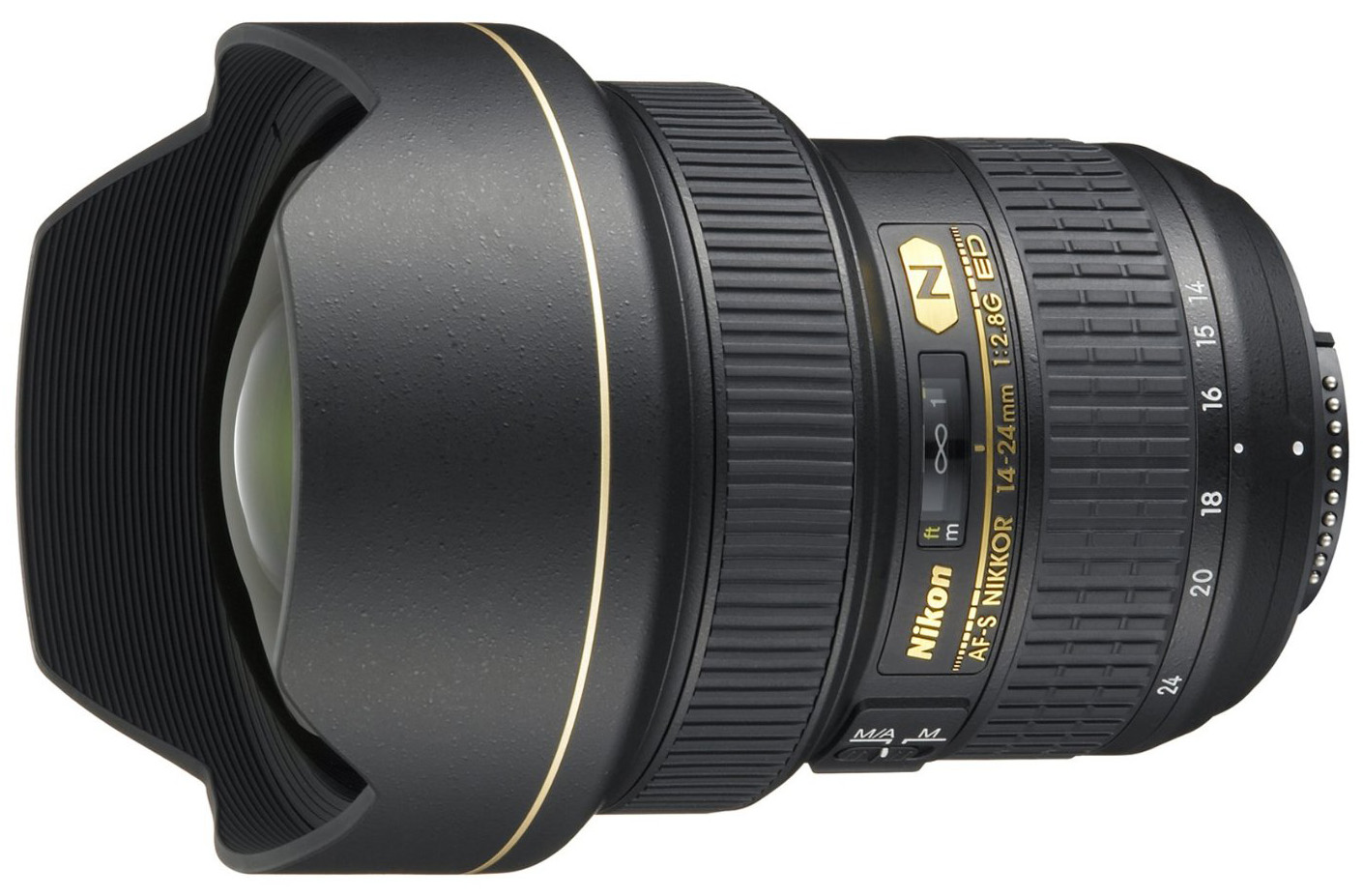 Category: Wide angle
Category: Wide angle
Weight: 34.2 oz.
What we like: Nikon's top wide-angle zoom from an optical perspective.
What we don't: Expensive and heavy.
The 14-24mm f/2.8 is Nikon’s premier wide-angle zoom and captures exceptionally sharp images throughout its range. In addition, the Silent Wave Motor focuses quickly and accurately and the f/2.8 maximum aperture is impressive. What are the shortcomings of the Nikon 14-24mm f/2.8? It’s quite heavy at over 34 ounces and costs nearly $2,000. You also can expect significant distortion at the wide end, but this is normal for a lens of this type and can be corrected in-camera on the D810. For professionals and serious wide-angle photographers, and particular those who shoot ultra-wide, the Nikon 14-24mm is an excellent choice.
See the Nikon 14-24mm f/2.8
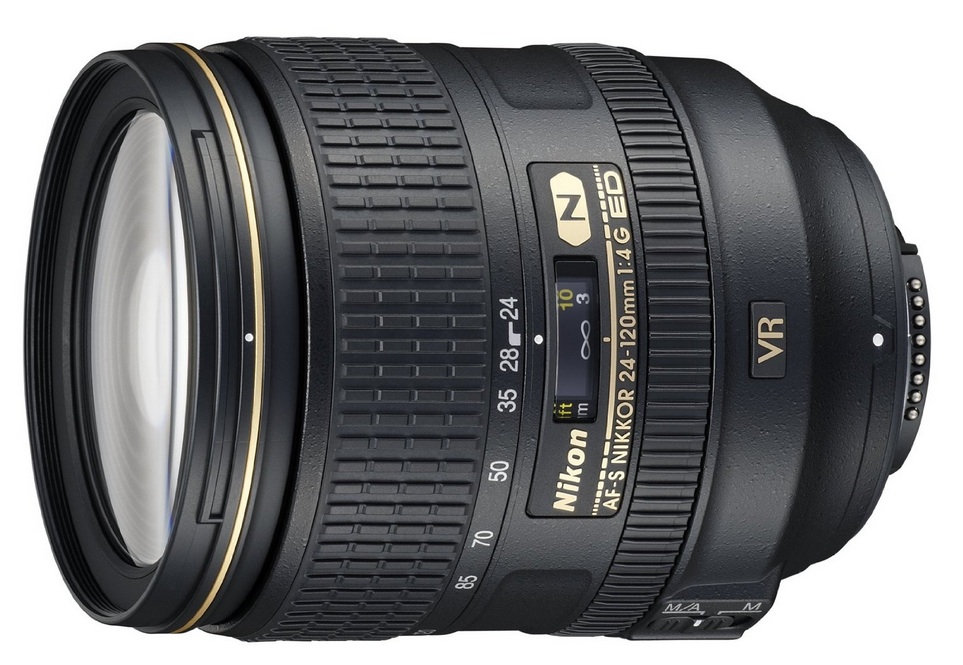 Category: Kit/travel zoom
Category: Kit/travel zoom
Weight: 23.6 oz.
What we like: Useful focal length range from wide-angle to medium telephoto.
What we don't: Low light performance.
Aside from the elaborate Filmmaker’s kit, the D810 is offered with the Nikon 24-120mm f/4 for $700 above than the cost of the camera alone. Given that the lens itself costs nearly $1,300, this represents a very nice savings for the pair. The 24-120mm f/4 isn’t necessarily a choice lens of top professionals, but it’s a reasonably priced and versatile zoom that is great for getting started with the D810. In addition to fast autofocus and vibration reduction, the lens is noticeably sharper than the 24-85mm below (and portrait shoots will love the extra 35mm of zoom). The 24-120mm is on the bulky side at over 23 ounces and its maximum aperture of f/4 means that the lens will struggle when natural light is low. But it’s still a solid starter lens at a good price.
See the Nikon 24-120mm f/4 VR
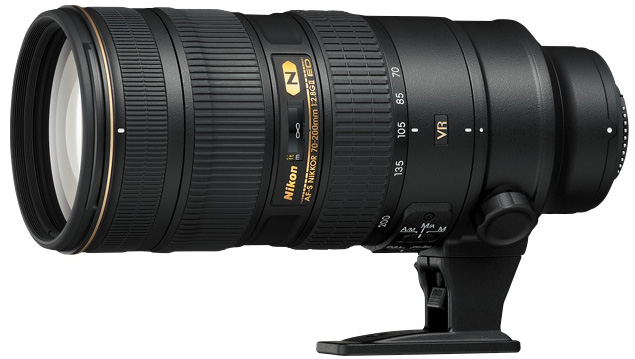 Category: Telephoto
Category: Telephoto
Weight: 54.3 oz.
What we like: Nikon’s top telephoto zoom for FX.
What we don't: Very heavy.
First and foremost, you may want to add a tripod when purchasing the Nikon 70-200mm f/2.8 VR II—it weighs in at a hefty 54.3 ounces. Weight notwithstanding, the 70-200mm is Nikon’s best performing telephoto zoom lens for everything from sports to school plays. The autofocus is fast and accurate, sharpness and colors are exemplary, distortion is low, and the lens comes with vibration reduction technology. Wildlife photographers will find that 200mm is not sufficient for far-off subjects, but the options get very pricey as telephoto capability increases (see the new Nikon 400mm f/2.8E, for example).
See the Nikon 70-200mm f/2.8 VR II
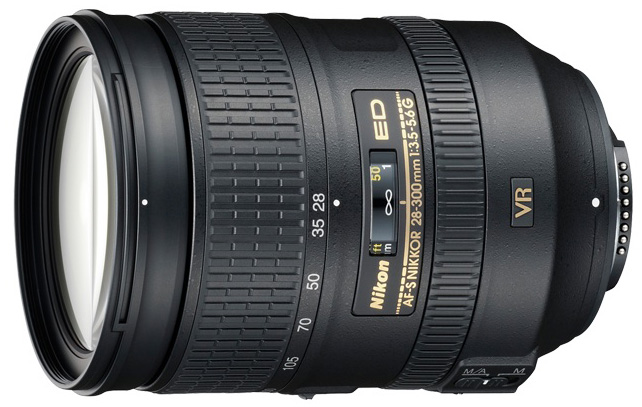 Category: All-in-one
Category: All-in-one
Weight: 28.2 oz.
What we like: Extremely versatile and a good value.
What we don't: Bulky and distortion at the ends.
Based on the popularity of all-in-one lenses for Nikon DX-format cameras, the Nikon 28-300mm VR was built specifically for full-frame—it’s currently the only all-in-one lens for FX. You can expect noticeable distortion at the ends (the Nikon D810 does have automatic distortion correction built into the camera) but the lens is sharp throughout its zoom range and good captures good images overall. The Nikon 28-300mm is heavy at over 28 ounces, but it’s actually lighter than many of the zoom lenses below including the Nikon 14-24mm, Nikon 24-70mm and Nikon 70-200mm.
See the Nikon 28-300mm f/3.5-5.6 VR
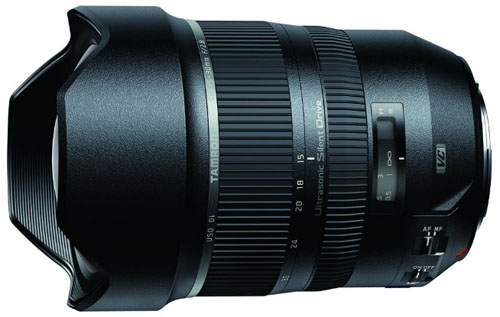 Category: Wide angle
Category: Wide angle
Weight: 38.9 oz.
What we like: As fast as Nikon’s 14-24mm, but cheaper and with image stabilization.
What we don’t: Super heavy and some distortion at the wide end.
Given the high price of the Nikon 14-24mm f/2.8 above, we’re always looking for fast wide-angle alternatives. Enter the Tamron 15-30mm f/2.8, which offers the same maximum aperture as the Nikon at a significant discount. The optics are impressive for the price, including excellent sharpness, fast autofocus, and solid build quality (not quite Nikon level, but good). And you even get more reach than the Nikon 14-24mm with the only sacrifice being 1mm at the wide end.
Why isn’t the Tamron 15-30mm f/2.8 ranked higher? It’s quite heavy, weighing in at nearly 2.5 pounds. This is more than 4 ounces heavier than the Nikon 14-24mm, already an extremely heavy lens, which is a notable downside to landscape photographers who carry their own gear deep into the backcountry. An added bonus: the Tamron does come with built-in vibration reduction (or Vibration Compensation as they call it), which helps when shooting without a tripod.
See the Tamron 15-30mm f/2.8
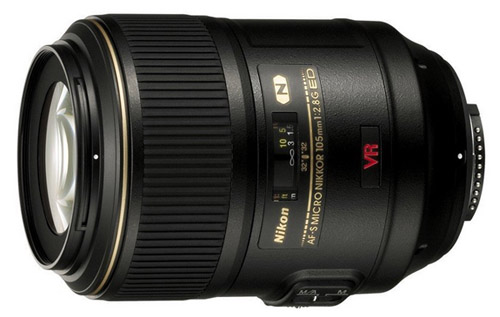 Category: Macro
Category: Macro
Weight: 25.4 oz.
What we like: Versatile, sharp, and a good price.
What we don’t: Heavy and autofocus can be slow on occasion.
If you’re in the market for a reasonably priced macro lens (Nikon uses the term "Micro"), our favorite option for the D810 is the 105mm f/2.8. With a minimum focusing distance of just over 12 inches and impressive sharpness, this lens can handle the vast majority of your macro needs. At 105mm, it also doubles as a short telephoto for portraits. For both types of photography, autofocus is reasonably fast in most circumstances, and low light performance and bokeh are solid. The 105mm f/2.8 is heavy at over 25 ounces despite a lot of plastic in the build, but image quality is impressive overall. For those with a bigger budget, Nikon does offer a much faster 105mm f/1.4 version, which is more than double the price but superb from an optical perspective.
See the Nikon 105mm f/2.8G VR
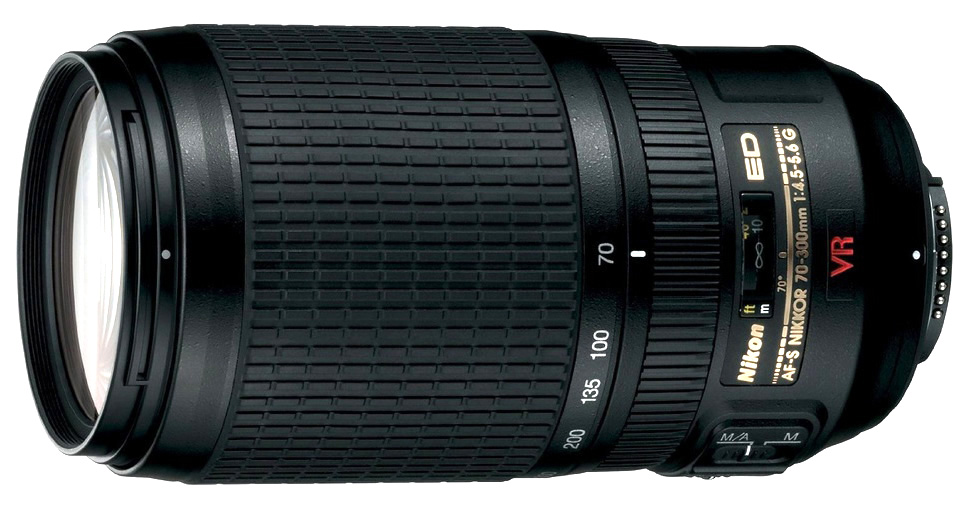 Category: Telephoto
Category: Telephoto
Weight: 26.3 oz.
What we like: Zoom range and low cost.
What we don't: Some distortion and softness at the ends.
The Nikon 70-300mm VR is an excellent telephoto zoom to pair with the D810 and one of the best values of any FX lens. For under $600, you get reasonably sharp images throughout its long zoom range, vibration reduction covering up to four stops, and a Silent Wave Motor that focuses quickly (most of the time). The biggest shortcoming of this lens is its maximum aperture of f/4.5-5.6—professionals and those who frequently shoot in low light should consider the Nikon 70-200mm f/2.8 below. But for the majority of people who aren’t telephoto specialists, this lens is a nice choice.
See the Nikon 70-300mm f/4.5-5.6 VR
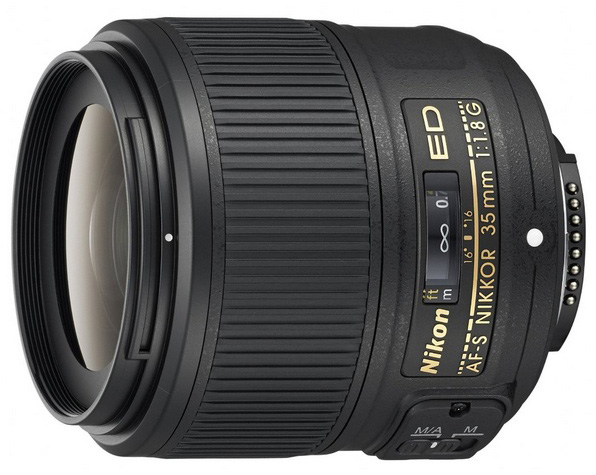 Category: Travel/portrait
Category: Travel/portrait
Weight: 10.8 oz.
What we like: A good value.
What we don't: Plastic build and could be a bit sharper.
Released a few years ago, the Nikon 35mm f/1.8 makes this highly useful focal length available to a wider range of consumers. Until recently, the f/1.4 below was the only 35mm prime option for FX, but the new f/1.8 has bridged the gap nicely. With this lens you get good sharpness, fast autofocus, and respectable bokeh, all for $1,000 less than the f/1.4. Aside from a metal mount, the lens is constructed almost entirely of plastic and therefore won’t last forever, but this does help keep it light at 10.8 ounces.
See the Nikon 35mm f/1.8G
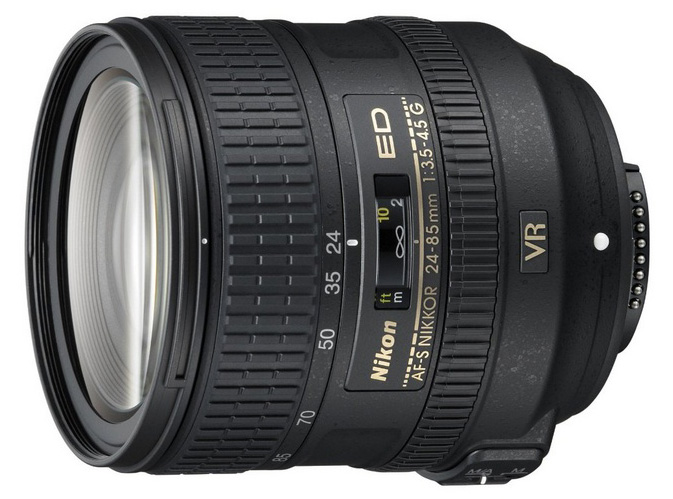 Category: Travel zoom
Category: Travel zoom
Weight: 16.4 oz.
What we like: Versatile and lightweight.
What we don't: Distortion and softness.
Versatile zooms are becoming increasingly popular with amateurs and professionals alike, which is evident with lenses like the Nikon 24-85mm VR. For under $600 you get a quality FX lens that can shoot anything from wide-angle to portraits, making it an good walk-around lens for travel, portraits, and everyday life. The biggest sacrifice comes with its low light performance, which is passable but not optimal (the lens does have vibration reduction unlike the Nikon 24-70mm above). Compared to some of the top prime and zoom lenses for FX, the 24-85mm has more softness in the corners and some distortion, particularly at the wide end. It’s still a good value and an enticing budget lens to pair with the D810 if you're on a really tight budget.
See the Nikon 24-85mm f/3.5-4.5 VR
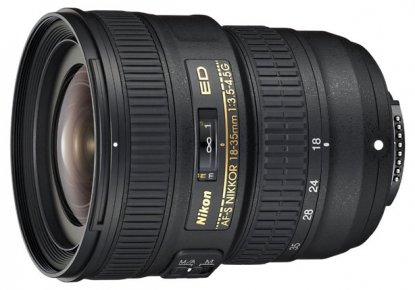 Category: Wide angle
Category: Wide angle
Weight: 13.6 oz.
Maximum aperture: f/3.5
What we like: Lightweight and a great value for a wide-angle lens.
What we don't: No vibration reduction.
A few years ago Nikon bucked the trend of ultra-pricey wide-angle zooms with the release of the 18-35mm f/3.5-4.5. We love this lens and the optics are much better than you might expect at this price point, including good sharpness, fast autofocus, and less distortion than many of Nikon’s older wide-angle zooms. The clear sacrifice comes with low light performance, and given that the lens does not have vibration reduction, this isn’t an optimal choice for sunsets or dimly lit indoor shots. But for the majority of other uses, it’s a great way to get a true wide-angle lens for the Nikon D810 without breaking the bank.
See the Nikon 18-35mm f/3.5-4.5
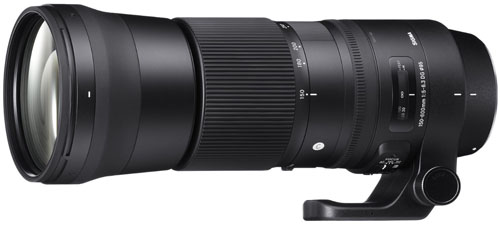 Category: Telephoto
Category: Telephoto
Weight: 68.8 oz.
What we like: Massive zoom for under $1,000.
What we don’t: Extraordinarily large and slow maximum aperture.
We’ve covered two of Nikon’s most popular full-frame telephoto lenses above with the 70-200mm f/2.8 and 70-300mm f/4.5-5.6. Those models certainly have their upsides, but neither can compete with the ultra-long zoom range of the Sigma 150-600mm f/5-6.3. For uses like wildlife photography and birding in good natural light, this lens offers the kind of zoom that you want and need while staying under a $1,000 price point.
The major compromises in choosing the Sigma 150-600mm are clear. First, the maximum aperture of f/5-6.3 is the slowest on this list and means that the lens definitely will struggle in low light (you do get Sigma’s Optical Stabilizer to help). And at a whopping 68.8 ounces (that is not a misprint), this lens is a beast in weight and size and you’ll most certainly want to use a tripod. All in all, the image quality may not quite be up to the standards of Nikon’s pro-level telephoto models, but it’s a fun option for daytime wildlife photography and a good value.
See the Sigma 150-600mm f/5-6.3 OS
| Lens | Price | Category | Weight | Max. Aperture | VR | Filter |
|---|---|---|---|---|---|---|
| Nikon 24-70mm f/2.8E VR | $2,397 | Portrait/travel | 37.8 oz. | f/2.8 | Yes | 82mm |
| Nikon 50mm f/1.4G | $447 | Portrait | 12.7 oz. | f/1.4 | No | 58mm |
| Nikon 16-35mm f/4 VR | $1,097 | Wide angle | 24 oz. | f/4 | Yes | 77mm |
| Sigma 35mm f/1.4 Art | $899 | Travel | 23.5 oz. | f/1.4 | No | 67mm |
| Nikon 14-24mm f/2.8 | $1,897 | Wide angle | 34.2 oz. | f/2.8 | No | 77mm |
| Nikon 24-120mm f/4 VR | $2,397 | Kit/travel zoom | 23.6 oz. | f/4 | Yes | 77mm |
| Nikon 70-200mm f/2.8 VR II | $2,097 | Telephoto | 54.3 oz. | f/2.8 | Yes | 77mm |
| Nikon 28-300mm f/3.5-5.6 VR | $947 | All-in-one | 28.2 oz. | f/3.5 | Yes | 77mm |
| Tamron 15-30mm f/2.8 | $1,199 | Wide angle | 38.9 oz. | f/2.8 | Yes | N/A |
| Nikon 105mm f/2.8G VR | $897 | Macro | 25.4 oz. | f/2.8 | Yes | 62mm |
| Nikon 70-300mm f/4.5-5.6 VR | $497 | Telephoto | 26.3 oz. | f/4.5 | Yes | 67mm |
| Nikon 35mm f/1.8 | $527 | Travel | 10.8 oz. | f/1.8 | No | 58mm |
| Nikon 24-85mm f/3.5-4.5 VR | $497 | Travel zoom | 16.4 oz. | f/3.5 | Yes | 72mm |
| Nikon 18-35mm f/3.5-4.5G | $747 | Wide angle | 13.6 oz. | f/3.5 | No | 77mm |
| Sigma 150-600mm f/5-6.3 OS | $989 | Telephoto | 68.8 oz. | f.5 | Yes | 95mm |
The D810 is Nikon’s premier digital SLR—the best of the best. For the less expensive Nikon D750 we recommend going with the 24-120mm kit lens, but not for the D810. First, the lens is more expensive as a part of the kit ($700 extra instead of $300). Second, it’s just not quite good enough optically to match the resolution and overall image quality the camera produces.
Instead, we love the Nikon 24-70mm f/2.8E VR. This pro zoom is exceptionally sharp throughout its range and great in low light for a lens of this type. As a high-end walk-around lens for the D810, it just can’t be beat. Yes, you’ll still likely want to add specialty prime or zoom lenses at the focal lengths you shoot most, but the 24-70mm f/2.8 is the lens that will be on your camera the majority of the time.
The 24-70mm f/2.8 can cover most of your wide-angle needs, but we like to have the option to go wider. For everyone but professional landscape photographers, we recommend adding the Nikon 16-35mm f/4 VR. It’s inexpensive for a wide-angle zoom at just over $1,000, has vibration reduction for hand-held shots in low light, and is 10 ounces lighter than the 14-24mm f/2.8.

Another relatively inexpensive way to top off your Nikon D810 kit is the 70-300mm f/4.5-5.6 VR. If you’re like me and prefer the option to shoot telephoto on occasion, but don’t necessarily need a high-end lens, the 70-300mm gives you plenty of range at less than $600. It’s definitely not a low light workhorse for sunsets or dimly lit night or indoor scenes, but the vibration reduction helps and the lens should work well in most normal lighting conditions.
The prime vs. zoom debate goes as follows: prime lenses generally are faster, better in low light, and have less distortion. Zoom lenses are much more versatile by covering a range of focal lengths instead of just one. It used to be that professionals depended heavily on prime lenses while amateurs used zooms, but the gap is closing as Nikon and other lens manufacturers continue to improve the optical performance of their zoom offerings.
The Nikon D810 presents a tough situation: normally we would lean toward primes for a full-frame camera of this caliber but our single favorite lens is the 28-70mm f/2.8. This means that you may not need to add primes at focal lengths at 35mm or 50mm, for example. It’s true that the maximum aperture of f/2.8 isn’t perfect, and particularly for hand held shots in low light, but that zoom lens is so good that it makes us want to forget our primes.

We do like to add zooms at focal lengths that we use infrequently. For example, a professional landscape photographer who owns the Nikon D810 may want a collection of wide-angle lenses like the Nikon 14mm f/2.8 and Zeiss 21mm f/2.8. But if you don’t have a professional’s budget or want more versatility at a lower cost, the 16-35mm f/4 is a terrific zoom lens for the price.
The Nikon D810 was released in the summer of 2014, meaning that it’s getting a little long in the tooth by DSLR standards. However, it remains near the top of the full-frame DSLR pack and for good reason. When Nikon released the D810, it offered significantly better resolution than the 22.3-megapixel Canon 5D Mark III. Canon since has made a jump with the 5DS R at a whopping 50.6 megapixels, but that camera lacks the advanced video capabilities of the D810 and costs quite a bit more. The new Canon 5D Mark IV, released in 2017, still falls short of the D810 at 30.4 megapixels, although that camera does offer 4K video and a handful of other nice features.
Our conclusion is that in 2017, it’s still well worth investing in the Nikon D810 and the corresponding lenses. The camera is a good value at less than $2,800, and many of the FX lenses on the list should last for multiple camera bodies provided you take good care of them. Perhaps Nikon has been slow to update the D810 (there aren’t even many concrete rumors of a replacement), but that’s because they pretty much hit a home run right off the bat.
Back to Our Nikon D810 Lens Picks Back to Our Lens Comparison Table